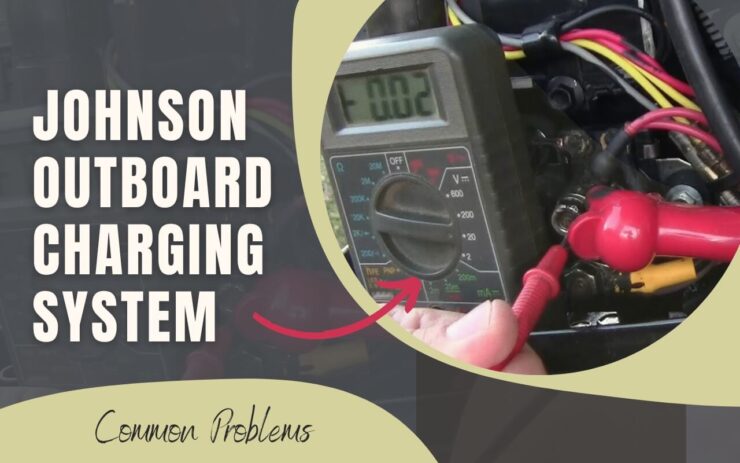The charging system of a Johnson outboard motor is an essential component that ensures the battery is maintained and charged to provide electrical power to the boat’s accessories and propulsion system.
The charging system is designed to replenish the battery’s charge while the motor is running, allowing for extended periods of use without the risk of a dead battery.
The charging system of a Johnson outboard motor typically consists of two main components: the stator and the regulator.
The stator is a stationary component that generates an AC electrical current when the motor is running.
This electrical current is then sent to the regulator, which converts the AC current to DC current and regulates the voltage to ensure the battery is not overcharged or undercharged.
If you use the Johnson Outboard charging system, you may run into a number of issues. It’s possible that you won’t even figure out what’s causing the issues.
So, what are the Johnson outboard charging system errors you may face?
A dead or faulty battery could be the reason. If one wire or connector falls off, you might face the problem. Worn-out carbon brushes are another one you can’t avoid. Voltage fluctuation might happen for excessive voltage drop.
Though these are some major issues with proper solutions, you’ll get over the situation.
Simply said, it is a synopsis of the piece. Besides that, we have further information for you. Continue reading the article to find out more information.
Table of Contents
ToggleHow Johnson Outboard Charging System Works?
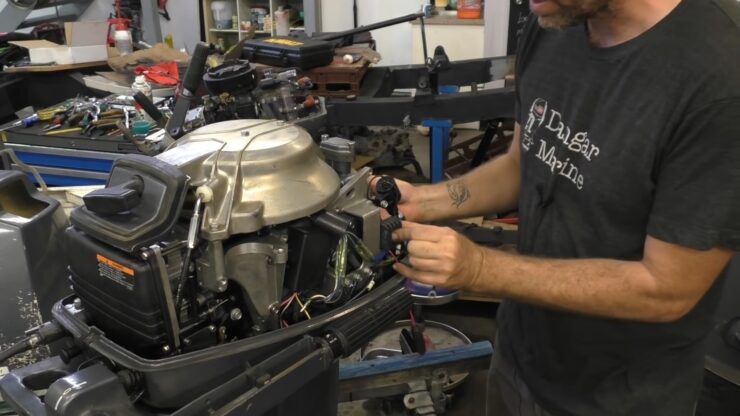
The Johnson charging system is in charge of recharging the batteries when they get low.
At the same time, it will provide power to the boat’s already-installed loads.
An alternator transforms the mechanical energy of the engine into electrical energy for the charging system.
The voltage of the battery reduces while it is being depleted by electrical loads.
The voltage regulator instructs the alternator to switch on. It should be done when the voltage goes below a specified threshold.
Get started on charging the batteries. An alternator may be switched on and off up to 12 times per second.
The alternator will run longer if the batteries are low and there is a strong demand for current. The alternator will freewheel and charge less as the battery demand decreases.
Test the power pack using a multimeter. Because the power pack has fluctuating voltage levels, a peak voltage adaptor will also be required.
Connect the peak voltage adapter’s test leads to the multimeter’s positive and negative connectors.
The charging system of a Johnson outboard motor operates as follows
- The motor is started, and the rotor begins to rotate.
- The rotating rotor generates an AC current in the stator windings.
- The AC current is sent to the regulator, which converts it to DC current and regulates the voltage.
- The DC current is sent to the battery, which charges and maintains the battery’s charge.
- The regulated voltage is also sent to the boat’s accessories and propulsion system to power them during operation.
Motor operates by generating an AC current in the stator windings, converting it to DC current and regulating the voltage to ensure the battery is charged correctly.
The charging system is an essential component that ensures the battery is maintained and charged during operation, providing electrical power to the boat’s accessories and propulsion system.
Regular maintenance and inspection of the charging system can help prevent problems and prolong the life of the battery and motor.
Troubleshooting of Johnson Outboard Charging System

The Johnson outboard motor’s power pack is essential to the ignition system. The power pack powers the ignition coils. A faulty or dead power pack might create troubles starting your Johnson outboard.
Let’s have a look to see all the common problems-
Problem 1: Dead Battery
It all begins with your damaged or faulty boat battery. You’ll need a battery that has enough cold cranking amps to get the engine up and running.
Your outboard’s starting motor may be unable to turn the flywheel quickly enough. Because of your ignition system if the voltage is incorrect. A dead battery can also affect Jhonson’s fuel pump.
A switch is required to start your engine and crank it over. The starting solenoid is opened and closed by the ignition switch on every electric start outboard.
The CDI Unit is also shorted to the ground. This shuts off the engine.
Solution
Adapt the multimeter test leads. Set the multimeter to “DC” or “Voltage” mode. Set the voltage range to 150 volts.
The power pack to the power coil wires. They are usually orange or white. Determine the positive and negative terminals.
Both will be clearly noted. Connect the positive and negative test leads to the power coil wires. A minimum of 150 volts is required. If not, change the battery.
Purchase the right battery to smooth the boat journey without facing any issues. This purchase can also
Problem 2: Wiring issues or connectors
In order for an alternator to work effectively, it requires at least three or four wires. Three or four smaller cables may be found in addition to the mainline.
All of these cables are crucial to the alternator’s performance. If one falls off, you may lose the ability to charge. This may have an impact on the johnson outboard charging systems.
Solution
Large power line connections between the alternator and battery should be examined for looseness. The purpose is to prevent corrosion.
When there’s an issue with the connection, the cable tends to become hot. Perform some tests on these wires using a multimeter, if you’re equipped with one.
There should be a wire with a voltage of 12 volts on this circuit. A battery-monitoring indicator light may be seen on the dashboard. Engine control units may be responsible for a third.
Problem 3: Worn-out Carbon Brushes
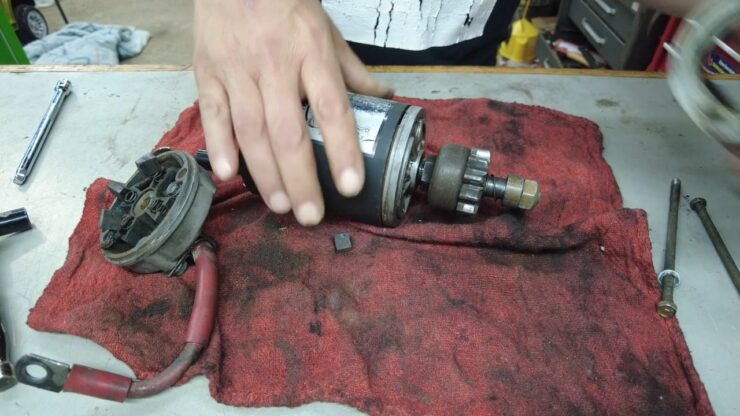
Batteries fail due to a malfunctioning or broken alternator, you might face a johnson outboard charging issue.
The carbon brushes, for example, were often swapped out within the alternator. Alternators have become a lot more affordable in recent years. Most of the time, it’s more cost-effective to replace the whole alternator.
Solution
As long as the boat engine is running, you may tap it with a hammer. See whether the voltage changes on the boat battery using a multimeter.
Hit the alternator gently with a hammer while the boat is running. the voltage might change and return to normal.
The carbon brushes are worn out and the alternator has to be replaced.
Even if the voltage does not vary, the alternator may be harmed by an electrical fault.
Problem 4: Voltage Fluctuation
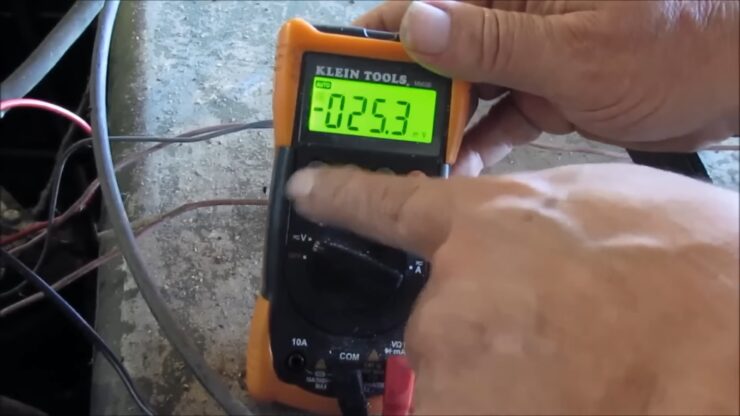
Excessive voltage drop is one of the issues for the johnson outboard charging system. This is particularly true of the DC electrical system, which is normally 12 volts.
With just 12 volts, to begin with, a drop in voltage may have a significant impact on how your DC appliances function. Loose connections, corrosion, and occasionally wire used in a circuit that may be too narrow.
A wire gauge to carry the amperage required by the circuit’s appliance to avoid excessive voltage drop. Excessive voltage loss manifests itself as an engine starting motor that isn’t turning your engine quickly enough.
Remember that if the voltage drop is high, the circuit is receiving insufficient current.
Volts and amps are inextricably linked and it directly affects the charging system. You can face voltage fluctuation while using mercury outboard.
Solution
The apparent first step is to ensure that all of your connections are free of debris and secure. A voltage drop test, performed with your meter, will verify whether or not they are.
As a general rule, you should do this procedure on all of your charging and starting system circuits. To discover more, type in “voltage drop test” into your favorite search engine.
To be safe, do an AC ripple test. Simply because you installed a new alternator does not imply that it is functioning well.
Maintenance and Care of Johnson Outboard Charging System
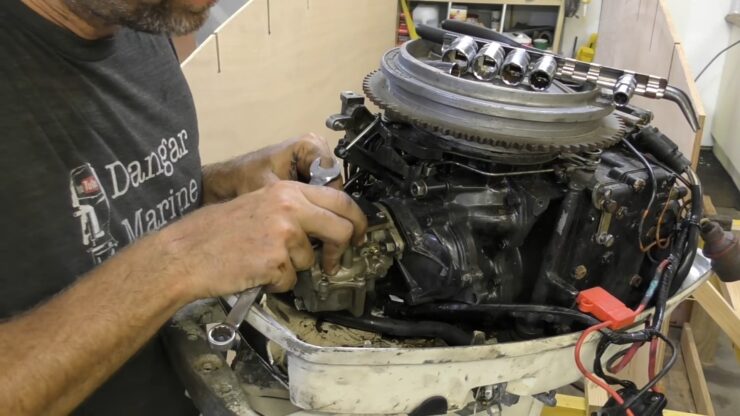
Proper maintenance and care of the Johnson outboard charging system is essential to ensure the battery is maintained and charged during operation, providing electrical power to the boat’s accessories and propulsion system.
Regular maintenance and inspection of the charging system can help prevent problems and prolong the life of the battery and motor.
Here are some tips for maintaining and caring for the Johnson outboard charging system:
Keep the charging system clean
Dirt, dust, and debris can accumulate on the charging system, leading to problems with the electrical connections. Regular cleaning of the charging system with a soft brush or cloth can help prevent these issues.
Inspect the wiring
The wiring connections of the charging system can become loose or corroded over time. Inspect the wiring for any signs of damage or wear, and tighten any loose connections.
Check the battery regularly
Regularly checking the battery’s condition and charge level can help prevent problems with the charging system.
Make sure the battery is fully charged before each use and replace any batteries that are not holding a charge.
Inspect the stator
The stator is a stationary component that generates an AC electrical current when the motor is running. Inspect the stator for any signs of damage or wear, including cracks, breaks, or loose connections.
Check the regulator
The regulator is responsible for converting the AC current generated by the stator to DC current and regulating the voltage.
Check the regulator for any signs of damage or wear, and replace any components that are not functioning correctly.
Lubricate the charging system
Lubricating the charging system components can help prevent corrosion and ensure proper functioning. Use a non-conductive lubricant and apply it sparingly to the charging system components.
Keep the charging system dry
Water can damage the charging system components, so it is essential to keep them dry. Avoid using excessive water when cleaning the charging system and make sure the components are completely dry before use.
FAQs

How does an outboard motor charge the battery?
Instead of an alternator, outboards utilize a stator. Magnets on the flywheel rotate around a stator.
It is made up of coils of wire and other material, while the engine is operating.
This produces electromagnetic fields, which in turn provide your charging current.
Do I need to disconnect my boat battery to charge it?
There’s no need to remove the batteries. Don’t be alarmed if you don’t have a battery switch. If you do, you should turn it off.
A word of caution: if you drain the battery by listening to music or turning on lights for hours. The boat’s charging mechanism will not be able to fully recharge the battery in a short boat trip.
Will a boat battery charge while idling?
When the engine is off idle, make sure the engine is charged. The charging voltage of 12-volt lead-acid batteries is roughly 13 volts. After starting the engine, check the battery voltage.12-volt.
Final Verdict
I hope you now understand all of the issues with the johnson outboard charging system and how to fix them. Try to fix the issues based on the symptoms.
It’s time to bid you farewell. We hope you found our essay to be informative and entertaining.
I’m Liam Jackson, the proud owner and driving force behind KayakPaddling.net. Born somewhere in the expansive beauty of the United States, I’ve nurtured a lifelong passion for kayaking and fishing that has led me to explore the far corners of our nation’s waterways.
Related Posts:
- Heavy Duty Fishing: 11 Best Rods And Reels For Big Fish 2024
- How to Test Outboard Stator (What is the Right Way)…
- Mercury Outboard Voltage Regulator - Problems & Solutions
- 10 Best Saltwater Fishing Boats - Ultimate Angling Adventure
- 12 Best Motorized Kayak 2024 - Start Your Aquatic Adventure!
- 16 Best Kayak For Beginners 2024 - Kayaking Adventure Gear

